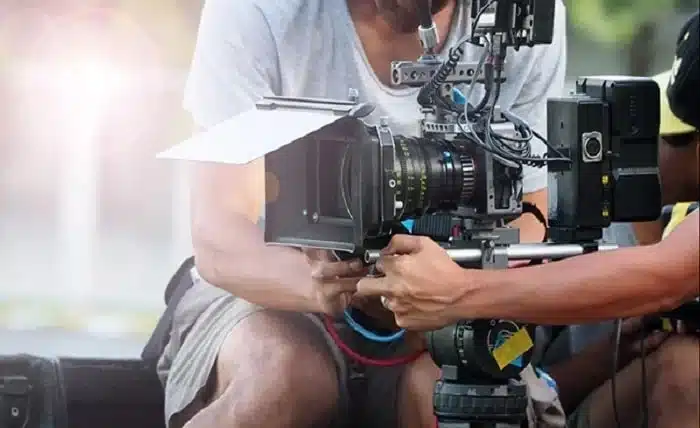How Lighting Affects Video Production Quality

In the world of video production, lighting is more than just a technical requirement; it’s an art that can transform the quality of your work. Whether you’re capturing a moment for a corporate event or producing content for a YouTube channel, the right lighting can make all the difference. This blog post explores the pivotal role lighting plays in video production, offering insights and practical tips to enhance your project’s visual appeal. By the end of this read, you’ll understand how lighting decisions can make or break your video content and how you can harness its power for greater impact.
The Importance of Lighting in Video Production
Lighting is a critical component of video production. It sets the tone, mood, and atmosphere of your video, impacting how audiences perceive the content. Proper lighting enhances details, improves color accuracy, and ensures clarity, making your videos visually appealing. Without it, even the best camera and the most talented actor can fall short. Therefore, understanding the nuances of lighting can elevate your production quality, enabling you to engage and captivate viewers more effectively.
How Lighting Influences Mood and Emotion
Lighting isn’t just about visibility; it’s a powerful tool for storytelling. Different lighting techniques can evoke various emotions and underscore the video’s narrative. For instance, soft, diffused lighting creates a warm, intimate feel, perfect for heartwarming stories. In contrast, harsh, direct lighting can add tension and drama, heightening suspense. By mastering these techniques, video producers can wield lighting as a narrative device, influencing how viewers feel and react.
Types of Lighting Techniques
Several lighting techniques can be employed in video production to achieve different effects. Key lighting is the primary light source and defines the subject’s shape. Fill lighting reduces shadows, while backlighting adds depth and separates the subject from the background. Each technique serves a specific purpose, and understanding when to use them can significantly improve your video’s quality. Experimenting with these techniques provides a comprehensive toolkit for video creators, allowing them to adapt to various scenarios and storytelling needs.
Natural vs. Artificial Lighting
The choice between natural and artificial lighting often depends on the video’s objectives and constraints. Natural lighting offers a soft, realistic quality that is hard to replicate, ideal for outdoor shoots and daylight settings. However, it is unpredictable and can change quickly, posing challenges for consistent video quality. Artificial lighting provides control and flexibility, allowing producers to create consistent lighting conditions regardless of the environment. Balancing these types can lead to innovative and stunning video productions.
The Role of Color Temperature
Color temperature dramatically affects the mood and feel of a video. Measured in Kelvin, it ranges from warm (yellow/orange) to cool (blue) tones. Warm colors often evoke coziness and comfort, while cooler tones suggest calmness or detachment. Understanding color temperature helps in setting the appropriate mood for scenes, ensuring that the visual tone aligns with the narrative intent. Mastery of color temperature can turn ordinary footage into an extraordinary visual experience.
Tools for Effective Lighting
For those aiming to enhance their video production, investing in quality lighting tools is essential. LED lights are popular for their efficiency and adjustable settings, while softboxes diffuse harsh light, creating a flattering effect. Ring lights are great for portrait shots, providing even illumination with minimal shadows. These tools, alongside reflectors and diffusers, offer endless possibilities to shape and control light, providing video producers with the resources to achieve professional results.
Practical Tips for Enhancing Video Quality
- Plan Your Lighting Setup: Before shooting, plan your lighting setup according to the scene’s requirements. Consider the source, direction, and intensity of light to ensure cohesion with the overall video concept.
- Experiment with Angles: Different lighting angles can drastically alter the appearance of your subject. Experiment with angles to find the best setup that highlights critical features and enhances your video’s aesthetic.
- Adjust According to Environment: Outdoor vs. indoor lighting requires different approaches. Be adaptable and adjust your lighting strategy to match environmental conditions for optimal results.
Overcoming Common Lighting Challenges
One of the challenges in video production is dealing with inadequate lighting conditions. Low light can lead to grainy footage, while excessive light can cause overexposure. Using lighting tools effectively and understanding camera settings can mitigate these issues. Additionally, post-production software can help correct lighting problems, allowing for fine-tuning and adjustments. By addressing these challenges head-on, producers can ensure consistent quality across their projects.
Lighting for Different Types of Videos
From corporate event planning to artistic short films, different video types demand unique lighting strategies. Corporate videos might require bright, even lighting to convey professionalism, while narrative films might employ moody, dynamic lighting to enhance storytelling. Understanding the context and audience of your video will guide your lighting choices, ensuring that each project is tailored to its specific needs and goals.
The Impact of Lighting on Editing
Good lighting not only improves video quality but also simplifies the editing process. Well-lit videos require fewer corrections, saving time and resources during post-production. It also allows for greater creativity in color grading, providing a solid foundation for enhancing the visual appeal. By prioritizing lighting, editors can focus on refining content rather than correcting fundamental flaws, leading to a more polished final product.
Conclusion
In video production, lighting is a crucial element that can elevate content from ordinary to exceptional. Understanding its impact, experimenting with various techniques, and investing in quality tools are essential steps for any aspiring video producer. By mastering lighting, you can create compelling, professional-quality videos that captivate audiences and convey your message with clarity and emotion. Whether you’re planning for a corporate event or crafting a personal narrative, lighting is a key ingredient in your recipe for success.




